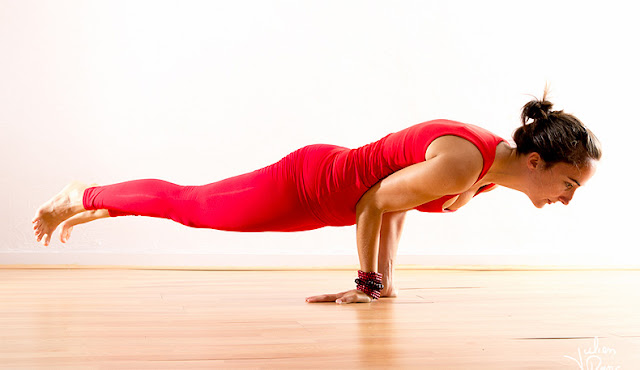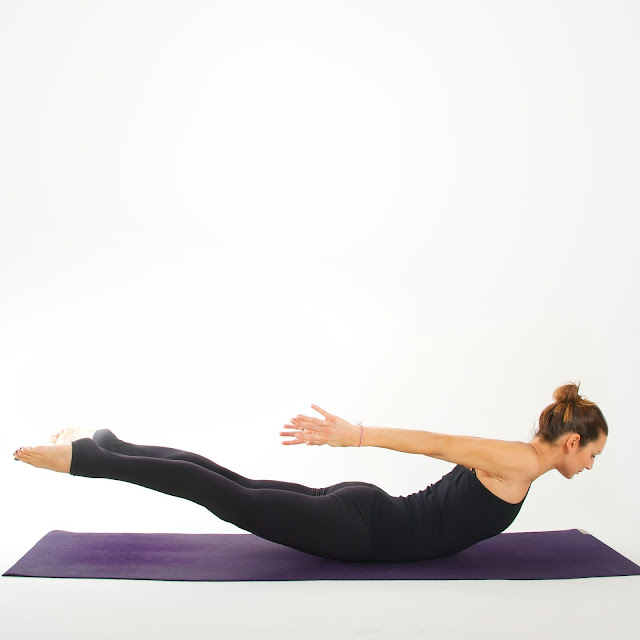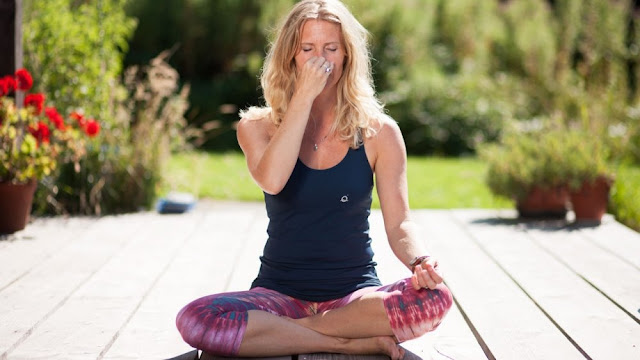Yoga has countless benefits, a prominent one is that it helps relieve muscle pain and stretches your muscles.
Yoga is a powerful practice that helps us stay active, manage stress, and also help with pain management. Yoga helps because of its strong focus on breathing, which energizes and relaxes our nervous system. Secondly, we move in so many different ways and planes of motion in a yoga class that it works like a complete reset for our posture.
And a good posture means less pain. That’s why a wholesome yoga practice with a wide variety of poses and mindful breathing helps reduce chronic pain and stiffness in muscles or joints. Here are eight strengthening and stretching postures that are particularly helpful in managing pain in the most common areas of the body.
1. Dwipada Marajriasana (Bird Dog Balance)
Strengthens: Spine and shoulders
Start in a tabletop position and extend your right leg back, lifting it off the ground in line with the hips. Stay here, else if comfortable, raise your left hand out as well, so you’re balancing on two limbs. Pull the navel towards the spine so your core is engaged and you’re not sinking at the lower back. Hold for 5 to 9 breaths and then switch sides.
2. Ardha Pincha Mayurasana (Dolphin Pose)
Strengthens: Shoulders
Start in a forearm plank with fingers interlocked and start walking your feet towards the hands. Stop once you feel you’ve reached your maximum and hold the position there. If the heels are raised, see if you can rest them on the ground, which will increase the stretch in the hamstrings. It’s alright if that doesn’t feel comfortable. The elbows may tend to splay out; keep hugging them towards each other, so they stay shoulder-width apart. Hold for 5 to 9 breaths and rest in child pose.
3. Ardha Shalabhasana (Half Locust Pose)
Strengthens: Glutes and hamstrings
Start in a prone position with your arms crossed in front of you. Let your forehead rest on your forearm and point the legs back. Pull the navel in strong and lift one leg off the ground as high as comfortable. Do not tilt the body to one side to lift the leg. Do this slowly without using speed or momentum. Hold for 3 to 5 breaths and switch sides. You can repeat this 5 to 10 times. It can help relieve lower back and knee pain.
4. Supta Kapotasana (Supine Pigeon Pose)
Stretches: Glutes, piriformis, lower back.
Start in a supine position with knees bent. Lift your right ankle and place it above your left knee. Then bring the left knee to the chest by pulling gently with your hands. If comfortable, use your right elbow to get the right shin parallel to the ground. Hold for 5 to 10 breaths and repeat on the other side. This is an excellent stretch for runners and cyclists.
5. Nikunjasana (Extended Child Pose)
Stretches: Shoulders and upper back.
Start in the tabletop position and walk your hands forward till your forehead reaches the ground. Let the spine be neutral but press the hands into the ground. Maintain the hips above the knees. You can also rest your forehead on a pillow or a block. Hold for 5 to 9 breaths.
6. Pranayama
To get the best results from your yoga practice, you must include pranayama. Spend a minimum of 3 mins practicing either of these three techniques:
• Equal Breathing (same length of inhalation and exhalation)
• Double Breathing (exhalation is double the length of inhalation)
• Alternate nostril breathing (Anuloma-Viloma).
These will help increase your energy levels, vitality as well as healing capacity.
Yoga
7. Meditation
Did you know meditation can reduce pain sensation to the same degree as taking a pain killer? Research has shown that people who regularly meditate feel lesser pain. Meditation helps us rewire our brains to be less sensitive to pain. It also releases hormones, which are natural pain killers.
In summary, choose a variety of poses, spend more time on the ones that address your specific needs. Wrap it up with mindful breathing and meditation, and you’ll have a powerful tool to keep you happy, healthy, and pain-free.
Note: Remember to adapt postures to your needs by modifying or using props. The photos are only meant to give you a visual representation. There are many possible ways to hold a posture correctly.
Ms. Namita Piparaiya is a yoga and Ayurveda lifestyle specialist and founder of Yoganama.
Note- The information provided on this page is for general purposes only and should not be taken as professional advice. All the content provided on this page is my own creativity.
Did you enjoy reading this post? If you did, please take a second to share it with your friends. Sharing is caring! Thank you So Much.








